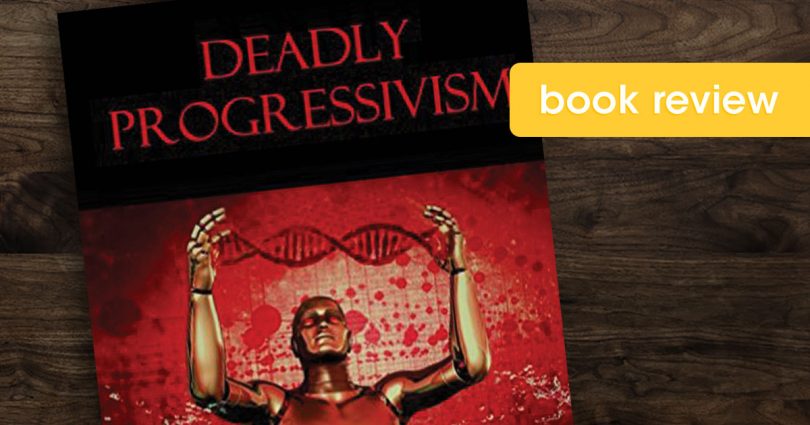It is better for all the world, if instead of waiting to execute degenerate offspring for crime or to let them starve for their imbecility, society can prevent those who are manifestly unfit from continuing their kind. The principle that sustains compulsory vaccination is broad enough to cover cutting the Fallopian tubes. Three generations of imbeciles are enough. —Supreme Court Justice Oliver Wendell Holmes (1841–1935)
Are Justice Holmes’s words merely a sad reflection of his time? Eugenics is an outdated social philosophy that has no bearing on modern politics and contemporary science, right?
In Deadly Progressivism, Christopher M. Reilly explains how eugenic ideas—which once led Justice Holmes to state that “[t]hree generations of imbeciles are enough”—have developed and are still very much alive today.
Reilly begins with Thomas Malthus (1766–1834), who argued that overpopulation would eventually lead to starvation and thus the end of the human race. Malthus posited that the only solution would be a society-wide program of limiting family sizes. The notion of overpopulation became intertwined with other ideas averse to poor populations, disabilities, and weakness, ultimately finding expression in Herbert Spencer’s book, Social Statistics, in which Spencer argued that survival of the fittest was a law of science and that “all imperfection must disappear” in humanity.
It was in this atmosphere that Charles Darwin (1809–1882) published Origin of the Species, which inspired Francis Galton (1822–1911), Darwin’s half-cousin, to apply the theory of evolution to human beings. Galton called his work “eugenics,” which at its core is an attempt to “improve” human beings in the world.
While science has advanced and technology has progressed, the principal ideas of eugenics have remained. For example, the Supreme Court’s 1973 decision to legalize abortion nationwide was largely influenced by eugenic ideas. In that decision, Justice Harry Blackmun based his entire argument on the work of a eugenicist named Glanville Williams, and years later, Supreme Court Justice Ruth Ginsberg Bader told Time: “Frankly I had thought that, at the time Roe was decided, there was concern about population growth and particularly growth in populations that we don’t want to have too many of.”
In 2003, Hillary Clinton objected to a partial-birth abortion ban for failing to include an exception for women who did not want a “child with severe abnormalities.” Justice Holmes’s words are not products of his time; eugenic ideas are alive and well in science and in politics.
The topic is indeed a grim one, but the book does not end on a dark note. Reilly finishes the book by answering the question, “What Can We Do?” Here he offers practical and faith-based advice on stopping deadly progressivism.
Deadly Progressivism is a book worth reading.
Deadly Progressivism, by Christopher M Reilly; CreateSpace; 2016; 174 pages; $14.99 (paperback)


Facebook Comments